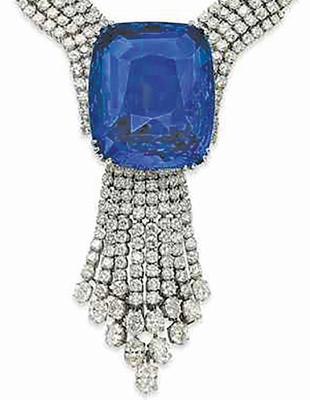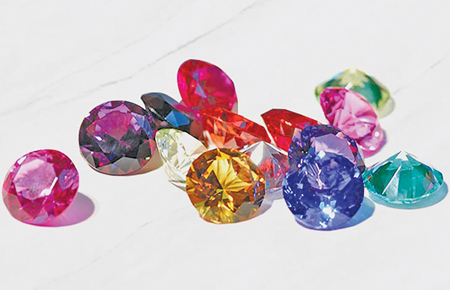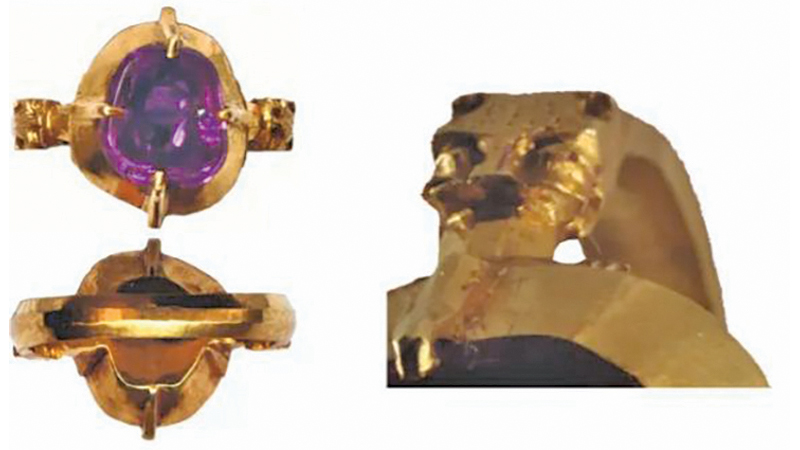 Sri Lankan gems certainly have a reputation, its extravagance and renown has been synonymous in the ancient world from time immemorial. Tales of Lanka as an exotic far away land bound with spices and riches has captured the imagination of many ancient travellers, that it was known as “Ratna-Dweepa” in Sanskrit, meaning “Island of Gems,” due to its rich deposits and the exceptional quality of its precious stones. While the blue sapphires are the most coveted, others colours include yellow, pink, purple and white
Sri Lankan gems certainly have a reputation, its extravagance and renown has been synonymous in the ancient world from time immemorial. Tales of Lanka as an exotic far away land bound with spices and riches has captured the imagination of many ancient travellers, that it was known as “Ratna-Dweepa” in Sanskrit, meaning “Island of Gems,” due to its rich deposits and the exceptional quality of its precious stones. While the blue sapphires are the most coveted, others colours include yellow, pink, purple and white
The extent of Sri Lanka’s gem trail can be gauged by a recent discovery in Slovakia where an exquisite golden ring with a reddish-purple sapphire deeply set in a golden band flanked by lions, was discovered in Zvolen Castle, in Central Slovakia. Sri Lankan sapphires are prized all over the world for its incredible depth of colour and variety

Blue Belle of Asia
“Such a ring embodied deep spiritual meanings, protective powers, and societal status, allowing the wearer to display wealth while also seeking the divine protection associated with the symbols they bore,” Noémi Beljak Pažinová, an archaeologist at Constantine the Philosopher University in Nitra, Slovakia, had informed the website Live Science via email. A treasure hunter found the ring in 2001, but archaeologists didn’t receive it until March 2023, which was presented with evidence in the Journal of Archaeological Science: Reports. Rings were a common accessory in Europe, however uncovering a bejeweled golden ring is an extremely rare event in Europe.
Researchers analysed the ring with the aid of non-destructive techniques such as Raman spectroscopy, which uses scattered light to understand the chemical composition of the material and micro-X-ray fluorescence spectroscopy. The research determined that the band was crafted from 18-karat gold, while the gem is a 2-carat corundum, a hard mineral that forms rubies and sapphires.
Animal imagery
The trace elements present in the gemstone indicate that the corundum in the ring is of Sri Lankan origin, and has been a source of the mineral since Roman times, while Sri Lanka is still known for its sapphire trade. The researchers noted that the gemstone likely made its way to Central Europe through ancient trade routes passing through Aleppo (in present-day Syria) or Constantinople. The gold band’s lion motif is an uncommon example of symbolic animal imagery on a medieval ring. In the Middle Ages, lions were prominent in heraldry, representing strength, bravery, and nobility. In Christian symbolism, the lion also stood for resurrection
“Bishops were required to wear such rings as an official symbol known as bishops’ rings of office,” Beljak Pažinová said, and therefore “we can consider a high ecclesiastical official as the bearer of this ring.” The exact identity of the ring’s original owner and when it was lost remain unanswered. According to the researchers, the castle where it was found fell into neglect in the latter half of the 14th century, and the ring was discovered by chance in the courtyard of the residential area. Based on its style, the ring is believed to be dated to around 1300 CE. The band of gold, adorned with a reddish-purple sapphire and a lion motif, is considered unique in the context of medieval European jewelry, the researchers said.
Precious gemstones
Encountering Sri Lankan gems so far away from home is not something new. As far back as 6th century BCE, Sri Lankan gems were traded with the Middle East, India, China, and Rome. Historical records indicate that sailors from Arabia and traders from Persia and Egypt sought Sri Lankan gems with great enthusiasm. According to legend, King Solomon of Israel gave the Queen of Sheba a large Sri Lankan sapphire as a gift, symbolising wealth and love. While not historically verified, the story points to the longstanding fame of Sri Lanka’s gems in antiquity
Another one of the earliest sources comes from the island’s historical chronicle, the Mahavamsa (the Great Chronicle), dated to the 5th century BCE. The Chronicle refers to the presence of gems in the island, noting that King Vijaya’s envoys sent gems to India.
 Significantly, other sources stem from ancient Greece and Rome where ancient geographers such as Ptolemy (2nd century CE) and writers such as Pliny the Elder mention the island (then known as Taprobane) as a source of precious gemstones. Arab traders during the early Islamic period (7th–10th centuries CE) also recorded an abundance of gems and pearls in Serendib, which was the Arabic name for Sri Lanka at the time. While Italian merchant and explorer Marco Polo praised the island’s gems in his travel accounts of the 13th century
Significantly, other sources stem from ancient Greece and Rome where ancient geographers such as Ptolemy (2nd century CE) and writers such as Pliny the Elder mention the island (then known as Taprobane) as a source of precious gemstones. Arab traders during the early Islamic period (7th–10th centuries CE) also recorded an abundance of gems and pearls in Serendib, which was the Arabic name for Sri Lanka at the time. While Italian merchant and explorer Marco Polo praised the island’s gems in his travel accounts of the 13th century
In recent history, who can forget the fabulous blue sapphire engagement ring boasting a 12-carat Ceylon blue sapphire set in white gold, surrounded by diamonds—originally worn by Princess Diana and now worn by Princess of Wales (Kate Middleton)
The design caused such a stir during its heyday, that many jewelers duplicated the same design to appease the vast public demands. One of the largest known faceted blue sapphires in the world (weighing 423 carats) is the Logan Sapphire, believed to have been mined in Sri Lanka. It was donated to the Smithsonian Institution in Washington, D.C., and remains one of its most admired exhibits. Another Sri Lankan stunner was the Blue Belle of Asia found in 1926, the sapphire broke international records selling for $ 17.3 million the highest selling auctions for a sapphire. Weighing at 392.52 carats, this legendary Sri Lankan sapphire was discovered in the 1920s and is recorded as the 4th largest faceted sapphire in the world and is regarded as one of the most beautiful sapphires ever found. It was eventually sold at a record-breaking auction at Christies, Geneva and is believed to have once been destined as a gift for Queen Elizabeth II, but ended up being sold to an anonymous bidder in 2014, adding to its mystery and allure.







